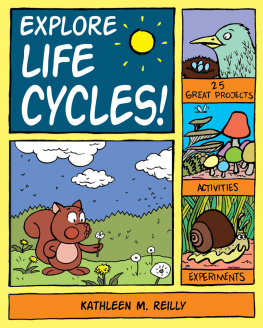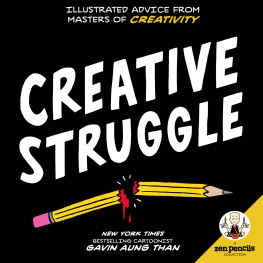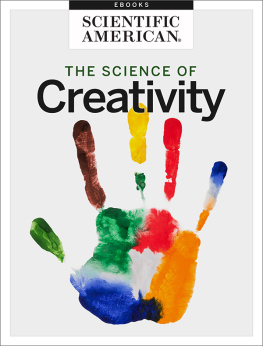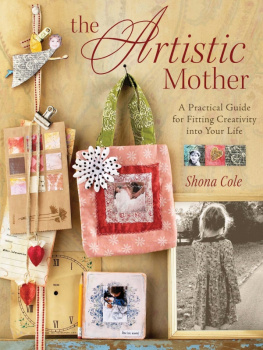Galenson - Old masters and young geniuses: the two life cycles of artistic creativity
Here you can read online Galenson - Old masters and young geniuses: the two life cycles of artistic creativity full text of the book (entire story) in english for free. Download pdf and epub, get meaning, cover and reviews about this ebook. City: Oxford;Princeton;N.J, year: 2008;2006, publisher: Princeton University Press, genre: Detective and thriller. Description of the work, (preface) as well as reviews are available. Best literature library LitArk.com created for fans of good reading and offers a wide selection of genres:
Romance novel
Science fiction
Adventure
Detective
Science
History
Home and family
Prose
Art
Politics
Computer
Non-fiction
Religion
Business
Children
Humor
Choose a favorite category and find really read worthwhile books. Enjoy immersion in the world of imagination, feel the emotions of the characters or learn something new for yourself, make an fascinating discovery.

- Book:Old masters and young geniuses: the two life cycles of artistic creativity
- Author:
- Publisher:Princeton University Press
- Genre:
- Year:2008;2006
- City:Oxford;Princeton;N.J
- Rating:3 / 5
- Favourites:Add to favourites
- Your mark:
- 60
- 1
- 2
- 3
- 4
- 5
Old masters and young geniuses: the two life cycles of artistic creativity: summary, description and annotation
We offer to read an annotation, description, summary or preface (depends on what the author of the book "Old masters and young geniuses: the two life cycles of artistic creativity" wrote himself). If you haven't found the necessary information about the book — write in the comments, we will try to find it.
Galenson: author's other books
Who wrote Old masters and young geniuses: the two life cycles of artistic creativity? Find out the surname, the name of the author of the book and a list of all author's works by series.
Old masters and young geniuses: the two life cycles of artistic creativity — read online for free the complete book (whole text) full work
Below is the text of the book, divided by pages. System saving the place of the last page read, allows you to conveniently read the book "Old masters and young geniuses: the two life cycles of artistic creativity" online for free, without having to search again every time where you left off. Put a bookmark, and you can go to the page where you finished reading at any time.
Font size:
Interval:
Bookmark:
OLD MASTERS and young geniuses
The Two Life Cycles
of Artistic Creativity
David W. Galenson
PRINCETON UNIVERSITY PRESS
PRINCETON AND OXFORD
Copyright 2006 by Princeton University Press
Published by Princeton University Press, 41 William Street,
Princeton, New Jersey 08540
In the United Kingdom: Princeton University Press,
3 Market Place, Woodstock, Oxfordshire OX20 1SY
All Rights Reserved
Second printing, and first paperback printing, 2008
Paperback ISBN: 978-0-691-13380-5
The Library of Congress has cataloged the cloth edition of this
book as follows
Galenson, David W.
Old masters and young geniuses : the two life cycles of artistic
creativity / David W. Galenson.
p. cm.
Includes bibliographical references and index.
ISBN-13: 978-0-691-12109-3 (cl : alk. paper)
ISBN-10: 0-691-12109-5 (cl : alk. paper)
1. Creation (Literary, artistic, etc.) 2. Ability, Influence
of age on. 3. Arts, Modern19th century. 4. Arts,
Modern20th century. I. Title.
NX160.G36 2005
700.19dc22 2005046571
British Library Cataloging-in-Publication Data is available
This book has been composed in Onyx MtStd, Syntax LTStd, and Sabon
Printed on acid-free paper.
press.princeton.edu
Printed in the United States of America
3 5 7 9 10 8 6 4 2
TO my mother
ILLUSTRATIONS
TABLES
During my senior year in college I was very busy writing an honors thesis in economics. To give myself a break from that work, in the spring I took several courses in other departments, one of which was a survey of the history of modern art. The course was fascinating, for it focused on a series of important innovations that had dramatically changed fine art in barely more than a century. The course covered the development of modern art through the 1960s, and one of the things that struck me during the last few weeks of the semester was how young the leading painters of that decade had been: Jasper Johns, Frank Stella, Larry Poons, and a number of their friends were hardly beyond college age themselves when they made the paintings we studied.
The course greatly increased my enjoyment of contemporary art, and during the years that followed I had the opportunity to visit a number of museums that have excellent collections. One effect of these visits was to reinforce my observation about the youth of the major artists of the 1960s, for although the best museums concentrated on the late work of the Abstract Expressionists who dominated the 1940s and 50s, they also consistently gave pride of place to the early works of the Pop artists and the other leading members of the next generation of painters. The Museum of Modern Art in New York, for example, which may have the single best collection of recent American art, consistently displays paintings Robert Rauschenberg, Jasper Johns, Jim Dine, and Frank Stella made before they had reached the age of 30.
By 1997 I had spent nearly a decade working on a large and detailed study of the economic mobility of immigrants and their children in nineteenth-century American cities. To take a break from that research, I decided to devote part of the summer to a systematic examination of the careers of some of the American artists I had first studied in college, by looking at how the prices their paintings brought at auction were affected by the ages of the artists when the paintings were produced. When I first began to collect auction prices for the work of several dozen important American painters, I had no idea that this would eventually lead to a new understanding of the life cycles of human creativity; in fact, I didnt know then what the current theory of this was, or even that there was one. Yet what I would learn during the next seven years not only would make me aware of the pronounced differences in the methods and careers of experimental and conceptual innovators in the arts, but also would serve as a vivid illustration of how radical and unexpected the results of the gradual process of experimental research can be. During that time a series of many small steps, each directly motivated by what I had learned in the past few weeks or months, produced a cumulative effect that is as surprising to me as it may be to many readers.
My initial analysis of the auction prices for the American painters produced the puzzling result that the work of some artists (including Jackson Pollock, Willem de Kooning, and Mark Rothko) increased in value as their careers progressed, whereas other artists (including Jasper Johns, Robert Rauschenberg, and Andy Warhol) produced their most valuable work at very early ages. To understand why these age-price profiles differed so much, I began to look in more detail at the careers of individual painters. I wasnt sure what I was looking for, but among the things I considered were how the artists worked, what their goals were, what was distinctive about their art, and when they made their most significant contributions. This led to my initial recognition that the two different patterns of prices over the artists life cycles were indicators of very different patterns of artistic creativity over the life cycle, which in turn were associated with very different artistic goals and very different methods of making paintings. For the first time I began to understand that the young artists of the 1960s produced works that differed so completely from those of their predecessors because they used fundamentally different methods in the pursuit of fundamentally different goals.
This was the beginning of an exciting period of discovery, as I progressively expanded my study to larger numbers of important modern painters to see whether my initial generalizations would hold up. Much to my surprise, they did, and a vast amount of detailed analysis and information that art scholars had collected about great modern painters began to fall into consistent patterns. The realization that my analysis afforded significant new insights into the history of modern art eventually prompted me to write a book, using the analysis of the two patterns of innovation to inform a narrative of several central episodes in the development of modern painting.
After that book was completed, I continued to extend my analysis to other groups of modern painters, and I continued to discover new implications of the analysis. During this time, however, I began to suspect that the behaviors I had identified in modern painting, with the basic distinction between experimental and conceptual approaches, were much more general characteristics of most, if not all, intellectual activities. I was initially reluctant to act on this suspicion, because I was enjoying being immersed in the history of modern painting, but eventually my curiosity prompted me to study another art. My research on painters had shown me the great value of being able to consult high-quality critical literature, so I first decided to study a sample of important modern poets. As I began to learn about the goals, methods, and achievements of these poets, I was delighted to see how well the experimental and conceptual categories could be translated to literature, and I was startled to discover how well the analysis could predict the patterns of poets life cycles of creativity. After the pilot study of poets I studied a group of modern novelists, and I had the same shock of recognition as I learned about their strengths and weaknesses, and the development of their work through their lives, and I again saw how readily many of the facts collected by literary scholars about these writers could be organized into systematic patterns. And as was the case for painters, I saw the surprising benefits of applying this analysis to poets and novelists, as many previously puzzling aspects of their behavior and the development of their work could be explained as general characteristics of types of artists.
Next pageFont size:
Interval:
Bookmark:
Similar books «Old masters and young geniuses: the two life cycles of artistic creativity»
Look at similar books to Old masters and young geniuses: the two life cycles of artistic creativity. We have selected literature similar in name and meaning in the hope of providing readers with more options to find new, interesting, not yet read works.
Discussion, reviews of the book Old masters and young geniuses: the two life cycles of artistic creativity and just readers' own opinions. Leave your comments, write what you think about the work, its meaning or the main characters. Specify what exactly you liked and what you didn't like, and why you think so.







